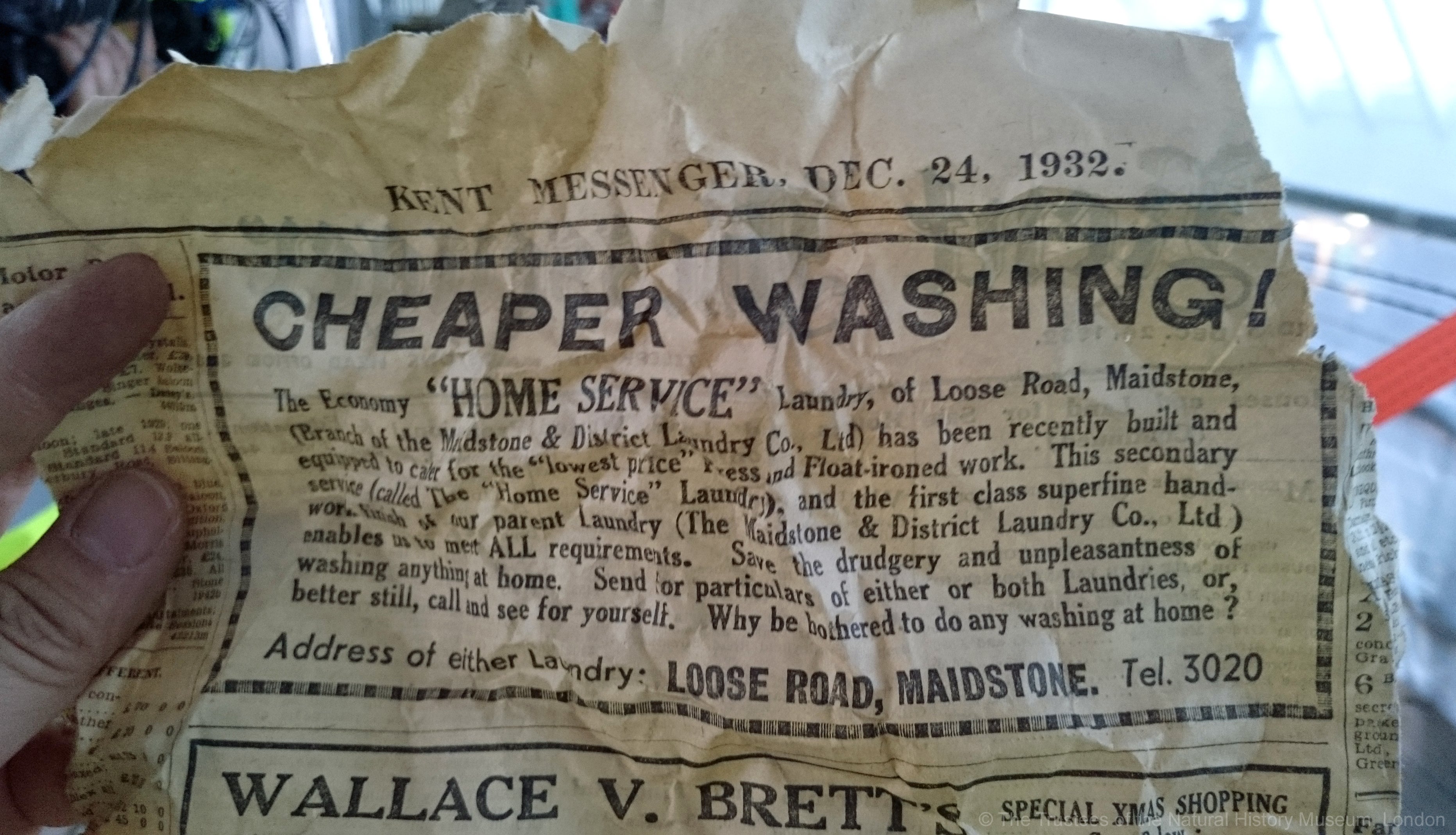
Inter-war copies of the Kent Messenger have been found holding together the bones of a giant blue whale skeleton in the Natural History Museum.
Various editions of the local weekly were found “stuffing” the iconic animal, including a Christmas Eve edition of the local weekly from 1932 that was “packing out intervertebral discs”, according to the museum’s twitter account.
The discovery, on Wednesday, was made while the whale’s 25-metre frame was being taken down from its current setting ahead of its move to Hintze Hall – the central lobby – to replace the famous plaster replica of a Diplodocus dinosaur skeleton known affectionately as Dippy.

Pages included classified adverts for houses, land and businesses as well as a laundrette’s services, which asks the reader: “Why be bothered to do any washing at home?”
A spokesman for the museum, in South Kensington, told the Messenger: “As our conservators have carefully de-installed the specimen, in preparation for its arrival in Hintze Hall in 2017, the Plaster-of-Paris-like material that was used to conjoin the fragile bones in the 1930s has unveiled its secrets.”
He added: “Workmen onsite clearly had connections to the county and perhaps even intended on creating this time capsule for the modern museum to eventually uncover.
The skeleton is from a blue whale that was beached in Wexford Harbour, Ireland, in 1891. It was bought by the museum from a merchant for £250 and first went on display in the Mammal Hall in 1938.
On the same day as the whale discovery, the museum’s anthropology group also tweeted that they had found a copy of an old Daily Express newspaper dating from 1968.
A picture of one page shows a feature explaining how cash machines work and describing it as “the biggest idea in banking since the cheque book”.
(Picture: The Trustees of the Natural History Museum, London)
Email pged@pressgazette.co.uk to point out mistakes, provide story tips or send in a letter for publication on our "Letters Page" blog

